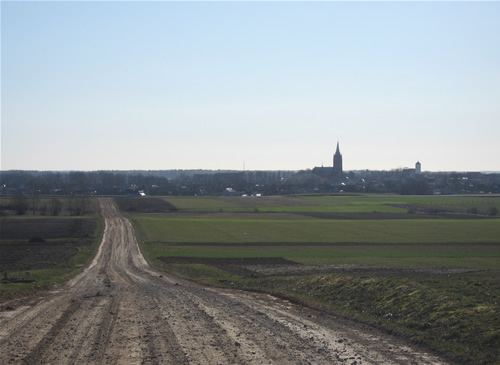County Šiauliai County First mentioned 1484 Population 9,150 (2011) | Eldership Kelmė eldership Area 7.85 km² Local time Sunday 12:31 AM | |
 | ||
Capital of Kelmė district municipalityKelmė eldership Weather 0°C, Wind N at 10 km/h, 99% Humidity Municipality | ||
Kelmė ( pronunciation ) is a city in northwestern Lithuania, a historical region of Samogitia. It has a population of 9,150 and is the administrative center of the Kelmė district municipality.
Contents
Map of Kelm%C4%97, Lithuania
History
Kelmė's name may come from the Lithuanian "Kelmynės", literally "the stubby place" because of the forests that were there at the time of its founding.
Kelmė was first mentioned in 1416, the year that Kelmė's first church was built.
Prior to World War II, Kelmė (Yiddish: Kelm) was home to a famous Rabbinical College, the Kelm Talmud Torah.
According to an 1897 census, 2,710 of Kelme’s 3,914 inhabitants were members of the town’s Jewish population, the vast majority of whom were merchants and traders and lived in the town.
Most of the Jews in Kelmė rural district were murdered during a mass execution on July 29, 1941. On August 22 a second mass execution occurred. On October 2, 1941, some Kelmė and Vaiguva Jews were murdered in Žagarė. The executions were committed by Lithuanians nazis, auxiliary police and Germans soldiers. In total, the number of victims is 1250-1300 people.
People
Twin towns
Kelmė is twinned with:
